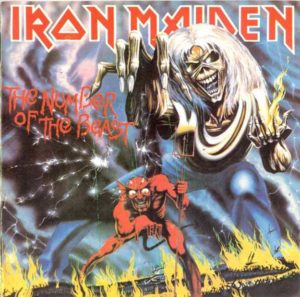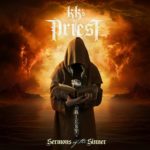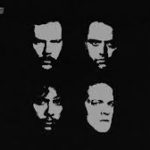The Mascots of Metal
When bands adopt an official mascot, the concept takes on a life of it’s own. The consistent presence of metal’s assorted creatures keeps the genre fun. The following list celebrates ten of the most beloved mascots in metal.
VIC RATTLEHEAD
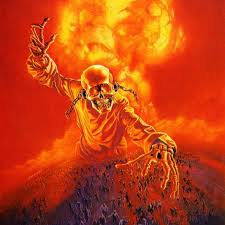
Vic Rattlehead was the skeletal representative of Megadeth right from the start. Not only does Vic appear on the cover of Megadeth’s debut, but he was also immortalized with song. “Skull Beneath the Skin” recounts the creation of this metal icon.
Prepare the patient’s scalp to peel away
Metal caps his ears he’ll hear not what we say
Solid steel visor riveted across his eyes
Iron staples close his jaws so no one hears his cries

Vic truly came into his own with Peace Sells and continued his mutations on So Far, So Good, So What. The release of singles allowed further adaptations of Vic, as well as unique designs exclusively available on posters, patches, t-shirt, and even a latex mask.

The ability of Vic to adapt to each Megadeth era has proved infinite. Even today, Vic remains relevant as ever. For the band’s latest album, Dystopia, the immortal Vic Rattlehead has been resurrected as a futuristic cyborg. As a new line-up ushers in the next era in Megadeth’s constant evolution, Vic Rattlehead remains at the forefront.
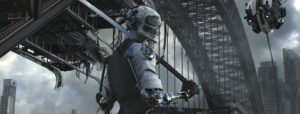
CHALY
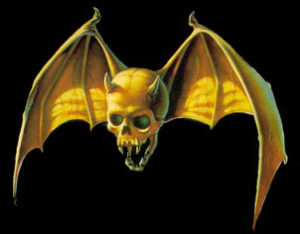
Overkill had the visual aspect of metal down pat. A florescent green logo helped the band stand out from other big names. To complete their unique vision, Overkill adopted a winged skull with glowing green eyes as their mascot. This devilish bat was dubbed Chaly.
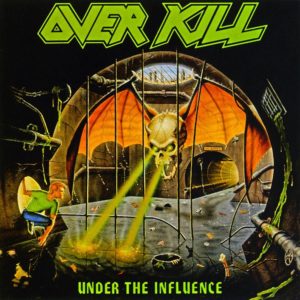
There have been many memorable Chaly moments during the course of Overkill’s storied career. Who could forget the Under the Influence album cover and Chaly’s cameo in the “Hello From the Gutter” video? Never fading from the Overkill aesthetic, Chaly endured through each decade and STILL finds a place on Overkill albums and t-shirts. As Overkill pointed out long ago, “E.vil N.ever D.ies.”
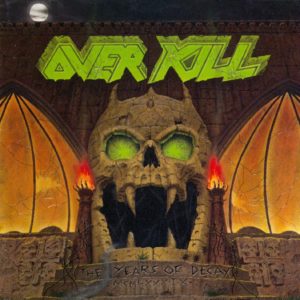
MURRAY
1983 was a huge year for Ronnie James Dio. Fresh out of Black Sabbath and already a legend, Dio unleashed his new vision upon the world. Armed with a stellar band, Holy Diver was an instant classic. To complete the package, a visual complement was needed. Enter Murray.
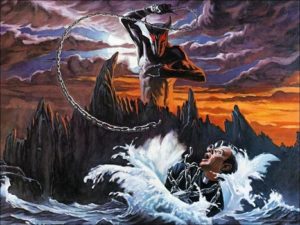
An evil creature with blood red eyes, our first glimpse of Murray shows this beast choking a drowning priest with iron chains. The potent image was more than enough to satisfy the dark requirements of eighties metal. Murray would make several appearances on DIO albums, each further solidifying his reputation as a malevolent being.
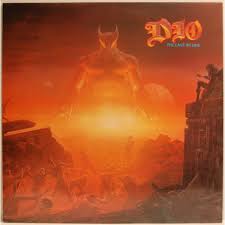
Turns out, the story of Murray, or should we say, Murralsee, is infinitely more complicated than any DIO fan could have imagined. In 1987, the Dream Evil tour book contained an eye-opening essay written by Mike Kibby titled, “The True Story of Murray.”

Lengthy and complicated, the essay traces the roots of Murray back to the origins of Planet Earth. Having consumed a potion that caused him to sleep for a trillion years, Murralsee awoke in a new era where he befriended Ronnie James Dio.
Having misheard his name, Ronnie mistakenly called his monstrous pal Murray. Often, Dio would return to the cave to hear stories of the olden days. These tales of ancient times served as source material for many DIO songs. As a tribute, Murray was subsequently featured on many of Dio’s biggest albums.
NOT MAN

Look at this goofy bastard. A big baldhead draws quite the contrast to bushy eyebrows and a furry mustache. That giant grin is guaranteed to elicit a chuckle from even the meanest metal tough-guy. Featured on countless t-shirts and immortalized in the “Anti-Social” video by none-other than Ozzy Osbourne, the Not Man is the perfect mascot for a band who dared to be different.
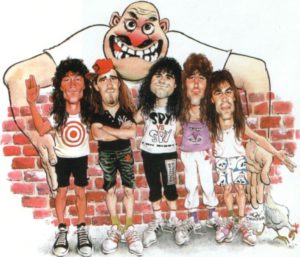
OD
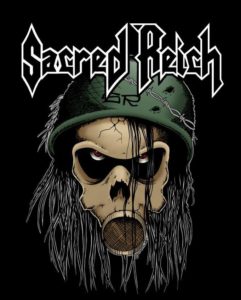
This gas-masking wearing skull guy made quite an impression on the cover of Surf Nicaragua. He’s appeared on numerous t-shirts designs throughout the years. Despite being omnipresent throughout their career, his name has eluded fans, many simply referring to him as the Sacred Reich dude.

Thankfully Phil Rind from Sacred Reich used Facebook to fill us in on the origins of this famous metal mascot. Known as OD, these initials are short for “Our Dude.” I guess fans weren’t too far off when calling him that “Sacred Reich dude.” As an image that became synonymous with a band, OD is one of the most successful mascots in metal.
Snaggletooth
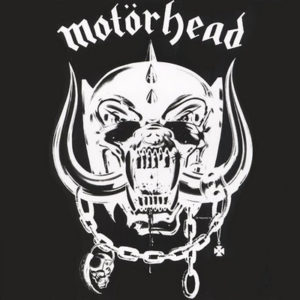
After being fired from Hawkwind, Lemmy shed the excess of his former band in favor of a faster breed of rock. Slang for “Speed Freak,” the name Motörhead described Lemmy’s new sound with astounding accuracy. To complete his vision, a visual statement was essential.
Known as either Snaggletooth or Warpig, Motörhead’s new mascot was no typical beast. After extensive experimentation, artist Joe Petagrno created a unique hybrid of animal skulls. With the addition of spikes, chains and an iron cross, Snaggletooth was ready to grace an ongoing succession of Motörhead records, shirts and patches. Even in this post-Motörhead world, Snaggletooth remains as timeless as the immortal Lemmy Kilmister.
SERGEANT D
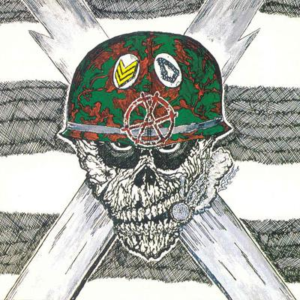
S.O.D. owe their existence to the cigar smoking Sergeant D. Scott Ian of Anthrax created this army-helmet wearing skull while drawing comics. Each illustration featured a caption demonstrating the ideology of his twisted comic book villain. Quotes like “I’m not racist, I hate everyone equally,” and “Speak English or Die” soon inspired Ian to write songs that reflected Sergeant D’s hilariously extreme world-view.
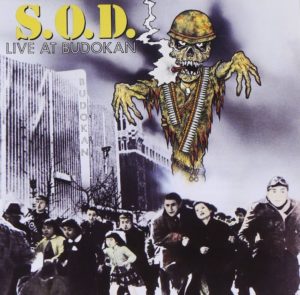
S.O.D. was formed to spread Sergeant D.’s comical message of hate. The result was an incredibly influential record that appealed to fans of metal and hardcore. Speak English or Die has sold over 1 million records worldwide, making S.O.D. one of metal’s most successful side-projects. Not bad for a joke band.
STARMAN
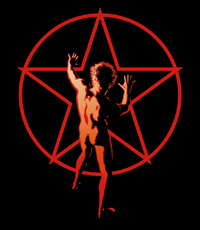
“Infinity- the star that would not die.”
Technically not metal, early Rush was among the heaviest bands of the seventies. After three albums of pure hard rock, Rush hit pay dirt with 2112.
At the heart of the album was the title track. A sprawling 20-minute sci-fi fantasy, the song describes a cluster of planets that have fallen under control of the Solar Federation. Creativity and personal expression have been forbidden to ensure uniform thought across this dystopian society.
Inside the gatefold, the bold image of a man facing a star greets listeners. The red star is the symbol of the Solar Federation, while the man represents the individual who bravely defies collective mentality. It’s a perfect visual representation of the “2112” story, but also a symbol that describes Rush as a band.

The Starman is upgraded from gatefold to front cover for the follow-up live album, All The World’s a Stage. Glowing red above Neal’s drum kit, the figure cuts a bold image against the darkened stage. No band members are in sight, only amps, monitors and drums. It seemed as if Rush were all too comfortable allowing a new mascot to become the face of the band.
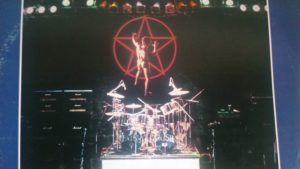
The release of Farewell to Kings proved that Rush had no intentions of leaving Starman behind. The first thing fans saw when accessing the record was a red image of the Starman printed on a black inner sleeve. The flip side featured live shots of the band. The Starman is seemingly at one with Rush.
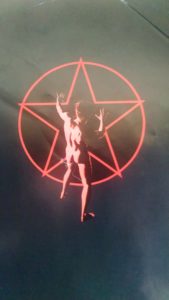
In 1980, the band stepped into a new decade with a newly refined sound. Any concerns that their logo would be relegated to the past were soon allayed. The Starman appears once again on the inner sleeve, this time below photos of the band. The seventies were gone and the band had an eye on the future. Still, Rush never forgot their roots. The Starman is eternal.

HENRY
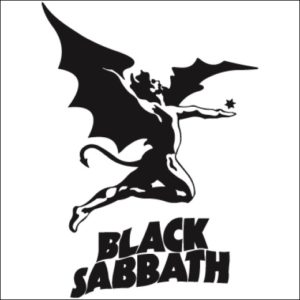
As far as mascots go, Henry showed up fairly late in the Sabbath saga. He never actually appeared on a Black Sabbath LP, though he was featured on Heaven and Hell’s, The Devil You Know (which, after all, was a Black Sabbath album in all but name). His cameo in the “Bible Black” video further immortalized the devilish mascot.
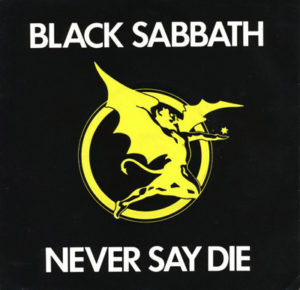
Tracing the initial appearance of Henry is a bit murky but he was certainly being used to promote the band in 1978. His likeness graces a “Never Say Die” single as well as advertisements promoting the tour. Additionally, Henry has been used on countless t-shirts over the years, making this devil/angel mascot instantly identifiable to legions of Black Sabbath fans.
EDDIE

In the early days, Iron Maiden’s famous mascot was simply known as Ed the Head. A horrid face above the drum-riser, Ed would spew blood at the climax of each set. Even as a club band, Iron Maiden had a top-notch stage show.
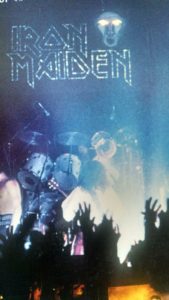
The concept of Eddie wouldn’t truly come to fruition until the arrival of Derek Riggs. The artwork that comprises the first Maiden record was chosen from a painting that Riggs had intended for use with a punk band. Dubbed Eddie and adopted as official mascot, an enduring partnership between band and artist was forged.
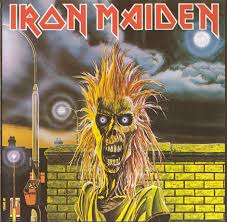
Immediately recognizing Eddie’s potential, Riggs was commissioned to produce new illustrations for the album’s singles. The sleeve for Running Free offered a partial view of a shadowy figure. Eddie’s face was obscured by darkness, effectively shrouding him in an aura of mystery.
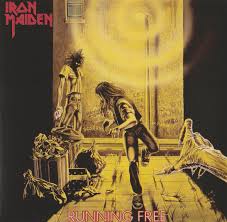
On the cover of the Sanctuary single, Eddie stands over the corpse of Margaret Thatcher. Brandishing a bloody knife, it’s clear what will happen if you find yourself on the bad side of Maiden’s mascot. Thatcher also appeared alongside Eddie on the Women in Uniform single.

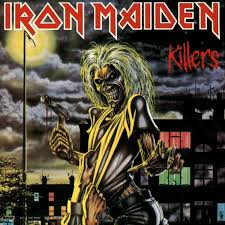
By the second album, Eddie shed his punk origins and appeared with long hair as he swung a bloody axe. The Number of the Beast revealed him as being in control of the devil himself. Piece of Mind featured a lobotomized Eddie. Even after the band killed their mascot in a televised performance, the undead one was resurrected in mummified form. Somewhere in Time transported Eddie to the future before inhabiting an ice-world on the Seventh Son of a Seventh Son sleeve.
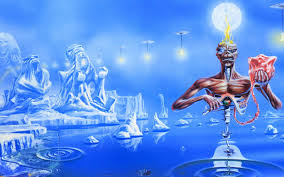
Between albums there was an endless succession of unique Eddie’s to promote singles and world tours. Speaking of concerts, the pinnacle of each Maiden performance was the unveiling of a giant Eddie built to represent the theme of that particular tour. No band has ever been able to match Maiden’s ability to bring their mascot to life. Eddie will forever stand as the undisputed king of metal mascots!
